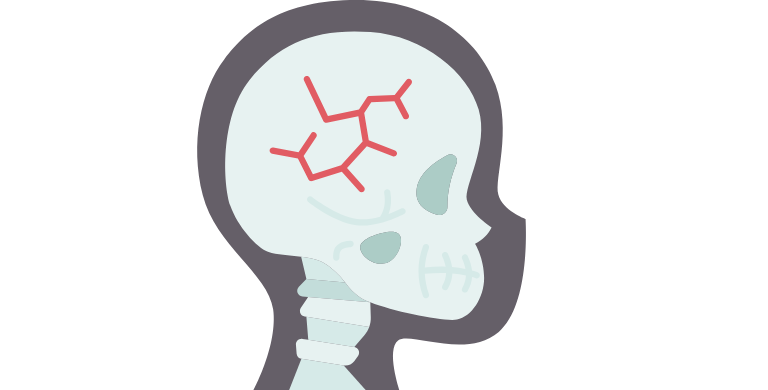What is a tonsillectomy?
A tonsillectomy – one of the most common surgeries kids and teens get – is a surgical procedure to remove tonsils. Healthy tonsils are oval-shaped glands (lymphatic tissue) on both sides of the back of the throat that help protect the body from infections. These small organs work to combat infection by serving as filters, trapping and destroying bacteria that enter through the nose and mouth. However, if they capture too many germs, the tonsils themselves can become inflamed and infected. This results in swelling and other symptoms. Viral infections, such as colds, influenza, adenovirus, and rhinovirus, are common causes. When bacteria are involved, group A streptococcus, which causes strep throat, is usually the culprit. Today, most tonsillectomies are done as day surgeries. This means that your child doesn’t stay in the hospital and can go home the same day.
Why are tonsillectomies done?
Kids usually have a tonsillectomy because their tonsils are so big (enlarged and/or swollen), they block the airway and make it hard to breath, especially during sleep. A child might snore and stop breathing for short periods while asleep (obstructive sleep apnoea) when the tonsils get in the way. A healthcare provider might also recommend removing the tonsils if a child gets a lot of tonsil infections.
What happens before a tonsillectomy?
Your health care provider will let you know if your child should stop taking any medicine in the week or two before the surgery. You’ll also be told when your child should stop eating and drinking because the stomach must be empty on the day of the procedure.
What happens during a tonsillectomy?
Surgery, no matter how common or simple, can be scary for kids. Help prepare your child by talking about what to expect. An ear, nose, and throat (ENT) surgeon will do the surgery while your child is under general anaesthesia. An anaesthesiologist will keep your child safely and comfortably asleep during the procedure. The surgery is done through your child’s open mouth. The surgeon removes the tonsils using a scalpel, laser, or heated instrument. The incision is then immediately cauterised to control bleeding. In some cases, the adenoids are also removed during the same procedure.
Can I stay with my child during a tonsillectomy?
Usually, you can stay with your child until just before the surgery. Then you’ll be with them again as they wake up after it’s over.
What happens after the tonsillectomy?
Your child will wake up in the recovery area and go home the same day. Recovery after a tonsillectomy may take a week or more. Expect some pain and discomfort after the tonsils are removed, which can make it hard for kids to eat and drink.
Are there any risks for a tonsillectomy?
There are risks with any surgery, including infection and problems with anaesthesia. Rarely, bleeding might happen during the surgery, right after it, or up to 2 weeks later. Call the doctor right away if your child coughs up, throws up, or spits out bright red blood or blood clots.
How can I help my child feel better?
Swallowing will be painful so children may be reluctant to eat or drink anything, putting them at risk for dehydration. Dehydration is the most common complication of this surgery. Adequate fluid intake is therefore essential for recovery. Give your child pain medicine as directed by your healthcare provider. Offer plenty to drink, and soft foods like jelly and custard, yoghurt, smoothies, soup, or mashed potatoes until your child is ready for solid foods. Foods that are rough and crunchy such as popcorn, rusks, potato chips, nuts or cereals should be avoided completely for a week. These foods can cause scratching and lead to bleeding. Kids should rest at home for a few days following surgery and take it easy for a couple of weeks. They should avoid blowing their nose for two weeks after surgery, as well as any rough playing or contact sports. They can return to school or childcare when they can eat normally, are sleeping well, and don’t need pain medicine.
When should I call the doctor?
Call the doctor if your child:
- Gets a fever.
- Excessive bleeding.
- Vomits after the first day or after taking medicine.
- Has a sore throat despite taking pain medicine.
- Is not drinking enough liquids with signs of dehydration.
Call the doctor right away if your child vomits blood or has trouble breathing.
What else should I know?
After tonsillectomy, kids can still get colds, sore throats, and throat infections. They won’t get tonsillitis unless the tonsils grow back, which is uncommon.
Sources
- KidsHealth: www.kidshealth.org/en/parents/tonsil/
- Children’s Hospital Los Angeles: www.chla.org/blog/advice-experts/tonsillectomy-what-expect
- University Hospitals: www.uhhospitals.org/blog/articles/2023/07/tonsil-and-adenoid-removal-what-parents-need-to-know
Date reviewed: July 2024
Intercare Day Hospitals welcomes you and your family
Intercare day hospitals carry out procedures that do not require an overnight stay. The surgical services prioritise patient safety and comfort, utilising procedure-related techniques and technology. This approach accelerates healing by getting patients home and back into comfortable surroundings as quickly as possible.
Discover compassionate care in modern facilities. Our expert team ensures your comfort and safety from consultation to admission, surgery and discharge in one day. Experience healthcare excellence with us.













